The Outer Wilds was one of the more captivating puzzle titles of the last few years, and while there are many elements that helped the game reach this status, one of the top elements was its pacing. The story had plenty of depth and surprises, but the process of unveiling those things was slow and measured, making the journey feel unique and enlightening, no matter how many times you repeated it. That slow reveal of story and mystery is exactly what developer Dogubomb is going for with its first game, Blue Prince.
The premise is good for a puzzle adventure game. Herbert S. Sinclair has passed away, and his last will and testament reveals that he left his estate at Mount Holly to his grandnephew, Simon. The catch is that to obtain ownership of the house and surrounding lands, Simon needs to find the house's fabled 46th room, which isn't present in any architectural plans, and nobody else knows of its whereabouts.
The core gameplay loop is akin to a board game like Betrayal at House on the Hill but with some restrictions in place. You're working with a grid that's nine squares in length and five squares in width. Every space is blank except for the entryway at the bottom middle and the supposed final destination at the top middle of the board. When you approach a door in a room, you're given three room tiles and are forced to place one on the board. Some tiles require a cost, such as the use of a key to unlock the door or gems to be able to place the tile on the board. Not all rooms contain doors, and you can configure a layout where no more passageways exist, causing you to forfeit and try again the next day. You're also given 50 steps per day, with each step being subtracted once you enter a room; forfeiting automatically occurs when you run out of steps for the day. Once you enter a new day, the whole board is reset, and anything you've gained along the way is also lost.
As in most board games, a number of cards have something special that slightly alters the game. For example, bedrooms give you a few extra steps in your reserves when you build them. Some rooms contain gems or keys, and some contain coins that can be used to buy food for replenishing your steps or tools that give you extra abilities, such as unlocking chests without a key or a shovel to dig up mounds of dirt for the possibility of extra coins and gems — provided you put down the cards that contain these stores. A few rooms also have puzzles you'll need to solve for items, some of which come in handy later on. Beyond these static abilities is the fact that some of the items located in each room are randomized, so while a lavatory might yield nothing one day, it can yield keys, coins, and a lucky rabbit's foot if you build it the next time.
One complaint people will encounter is the lack of flexibility when placing room tiles. For the most part, the game is good about ensuring that exits between rooms will connect, so the only way to block a possible entrance would be if you get some bad luck and draw room cards with no other plausible door connections. However, there are moments when one of the cards you draw gives you a plausible way forward, but the game's refusal to let you rotate the card in a specific way reminds you that the board game analogy breaks down.
The core gameplay loop is compelling enough to encourage replayability. Part of that comes from the inherent nature of randomization and a card roster large enough that it becomes impossible to see all of them in one run. Another part that contributes to the loop is the fact that a good chunk of the puzzles rely on information gleaned from other rooms. While there are puzzles where all of the necessary information is in one room, you'll run into ones like a padlock combination that's only learned if you open a completely different room that has nothing to do with the lock. It makes replayability a necessity, but the fact that the solutions never change between runs means that the information learned in one run is never wasted.
Other elements bolster the desire for another run after you've failed for the umpteenth time. One of the bigger elements is the discovery that not everything gets reset once you choose to end a day. Some rooms let you store a tool or currency for use the next day. Unlocking certain rooms and solving puzzles gives you more permanent buffs, such as more coins at the start of your day or more steps to work with. Others open up whole new areas that were previously locked or permanently change the dynamic of certain rooms. Going with the board game description from earlier, the discovery of this is akin to something like Betrayal: Legacy, where future runs feel completely different due to these immutable changes you've triggered.
The backstory is inferred in various ways. You may discover letters that connect with one another once you learn their correct chronological order. Random notes can denote the state of the house through the years. Newspaper clippings may relate to characters through the previously discovered letters. On occasion, you'll get a cut scene that conveys a tone that isn't very cheerful. Everything paints a picture of a house and inhabitants that are anything but picturesque, and while there are no horror elements or anything that requires advisory warnings, there's enough to craft a compelling tale.
Admittedly, this method of storytelling works best if you can ensure that your audience is willing to seek out every room tile and solve every puzzle to get every bit of information to piece together all of the backstory. The chances of running through all of the cards in one playthrough is rather slim. The presence of multiple pathways for the ending is excellent from a gameplay standpoint, but the chances are slim for anyone to see all of the cards. This is something to keep in mind if you're the type of player who rarely revisits games once the credits have rolled.
Graphically, Blue Prince is gorgeous. The use of cel shading for the colors mixed in with the sketch-like style gives the game an arresting aesthetic that blends well with the game's blueprint theme. The lack of actual characters in the play space puts more emphasis on the well-drawn environments, but the few characters you see in cut scenes animate well enough to not be a distraction. The game runs at a very good frame rate, and the only knock some people may have is the lack of support for ultrawide monitors or any real graphical settings.
The audio is also good but not quite perfect. The sound effects are fine enough, and while there isn't much in the way of voice acting, what's present is good enough that no complaints can be had. The music is a perfect mood setter, but the problem comes with the execution, as the game sticks with one track throughout the entire run. That track is completely dependent on what triggers it, so if you open a room whose track is meant to elicit dread, that tone is carried throughout the game, even if you find a room that should deliver the opposite feeling or a cut scene comes with its own soundtrack. It isn't a big enough issue, as it doesn't derail the experience, but it is noticeable.
The game is marked as Playable on the Steam Deck, and that certainly pans out based on our testing. The game runs at a 1280x800 resolution, and the graphical options in-game are scant, so there's really nothing you can change. That's a bit of a shame, as the game mostly runs well on the Deck, with the frame rate holding to 60fps most of the time, but there are moments when you'll turn the camera and the game stutters a bit before it stabilizes. The battery lasts around three hours on the LCD version of the device, but the game doesn't support cloud saves, which is a shame since this is a title that's perfect for short sessions. It's dependent on some of the more permanent unlocks to really get you some progress.
Blue Prince is a fascinating game. The premise is enticing for those who like card-based board games, and the bits of randomization help the game feel difficult without being outright unfair about it. The slow trickle of story information might seem frustrating at first, but it helps give one motivation to keep going, especially when you solve a puzzle and everything starts to fall into place. Those who love environmental puzzle titles will get some real joy out of Blue Prince.
Score: 8.5/10
More articles about Blue Prince


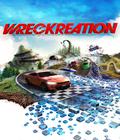


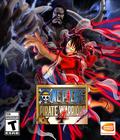
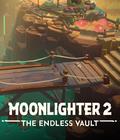
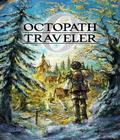

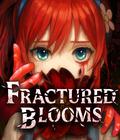

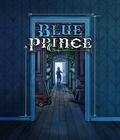 Blue Prince combines compelling mystery, strategy, and puzzle elements to create an unpredictable journey through Mt. Holly, a mysterious manor with shifting rooms.
Blue Prince combines compelling mystery, strategy, and puzzle elements to create an unpredictable journey through Mt. Holly, a mysterious manor with shifting rooms.































